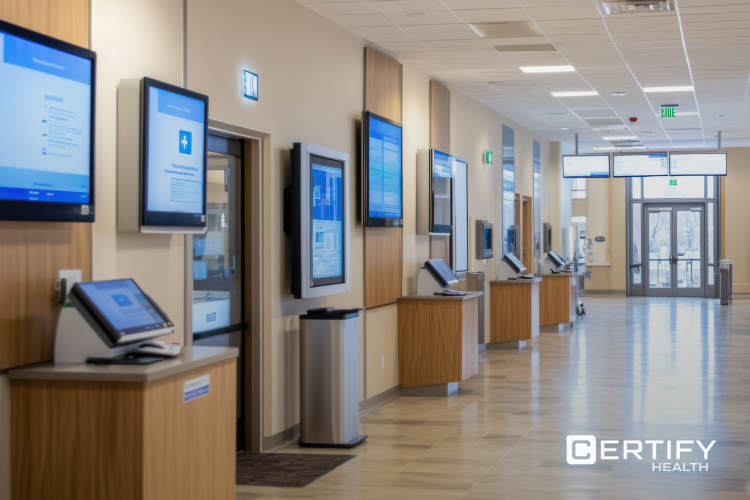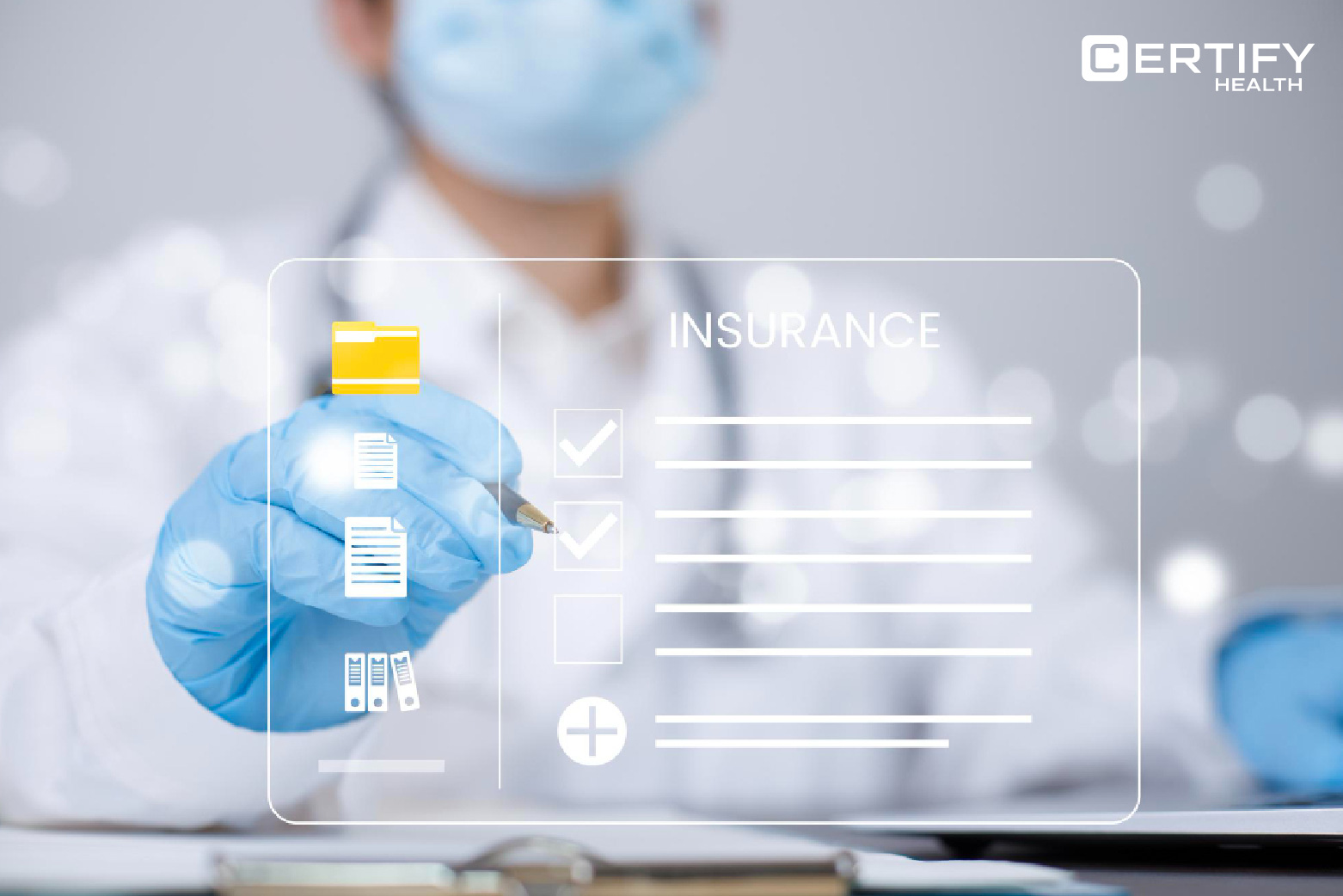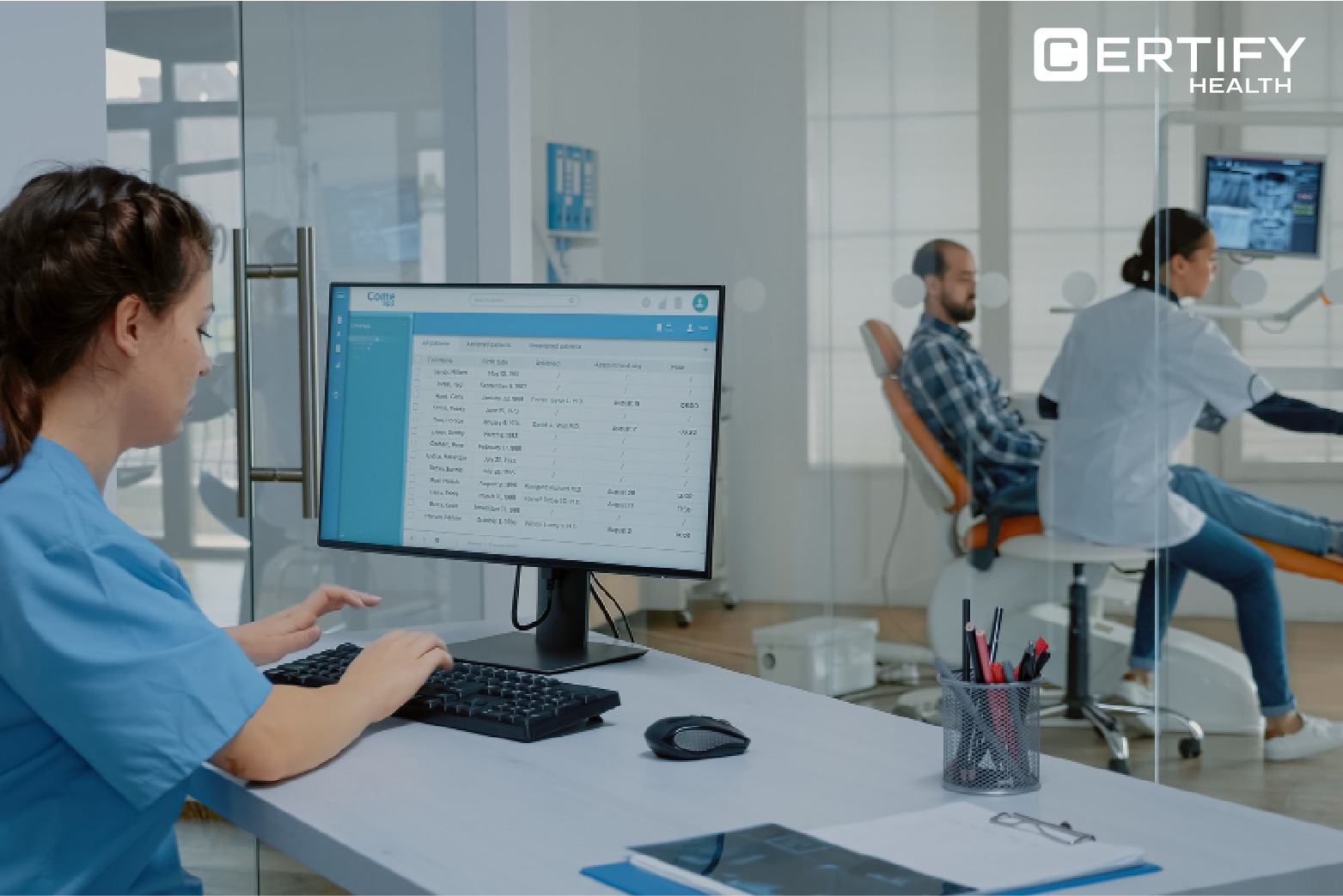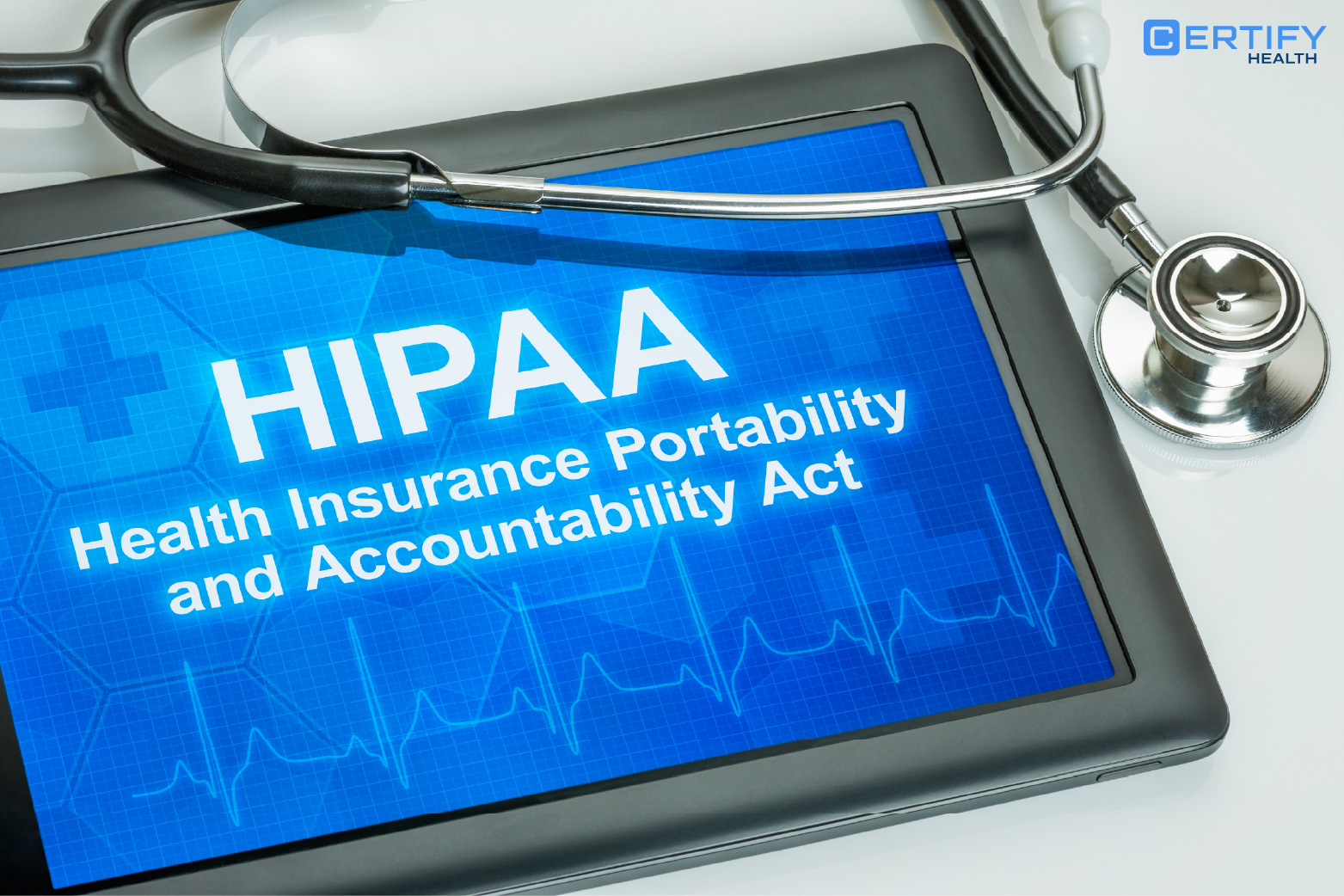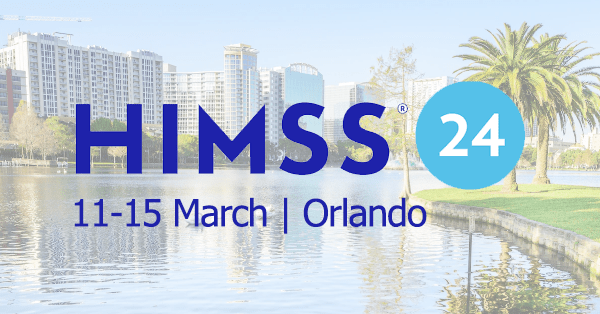Table of Contents
Introduction
By 2025, clipboards and paper forms are history—Medical check-in is the new norm. Healthcare providers are under pressure to work smarter, improve patient experiences, and ensure patient data privacy. The right check-in system makes all the difference, seamlessly fitting into existing workflows while reducing admin hassles and boosting revenue. In this blog, we will be exploring how modern medical check-in tech is transforming front desks and why it’s a must-have for any thriving practice.
Did you know?
As of late 2024, approximately 83% of healthcare practices still primarily rely on traditional front desk check-ins, with only 7% having fully embraced online check-in options.
Why Traditional Check-In Methods Are No Longer Enough
Administrative Burden and Staff Burnout

Revenue Leakage

Manual data collection during check in frequently results in incomplete or inaccurate patient information, leading to denied insurance claims and delayed reimbursements. real-time insurance verification software, practices discover coverage issues only after services have been rendered.
No-Show Rates and Lost Revenue
Did you know?
Long wait times don’t just frustrate patients—they cost practices money. Nearly 30% of patients walk out of an appointment due to waiting in long lines, while 1 in 5 have switched providers altogether. Every missed visit or lost patient means reduced revenue, making efficient check-in and scheduling crucial for financial stability.
Security Vulnerabilities
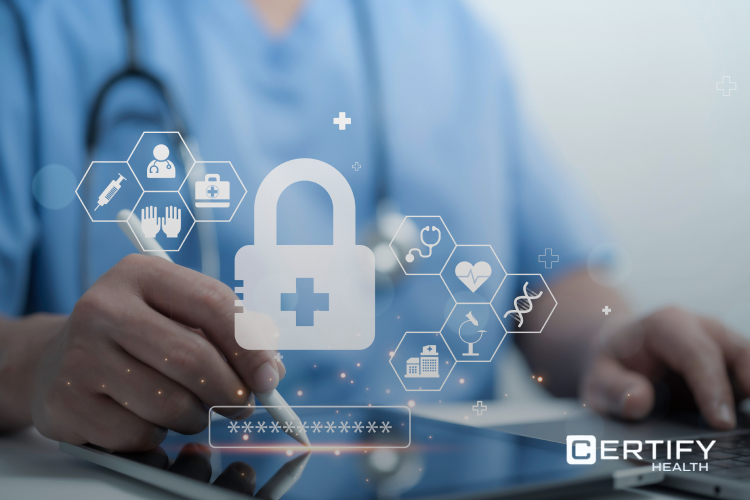
What is a Digital Patient Check-In Solution & What Does It Solve?
Modern patient check in solutions have a direct financial benefit in addition to streamlining processes. Reduce wait times, enhance patient flow, and boost daily intake capacity by automating manual operations with self-service kiosks, mobile apps, web portals, and tablet-based solutions.
A smooth check-in process increases patient happiness, encourages follow-up appointments, and eventually boosts your practice’s income and profitability.
Definition and Core Functions
Medical check in technology has evolved dramatically, transforming how healthcare facilities manage patient arrivals and information collection. These platforms eliminate paper forms by providing interactive digital interfaces where patients can:
- Verify personal information
- Complete medical histories
- Sign consent documents
- Address insurance requirements
Benefits for Patient Flow
Faster Check-Ins & Higher Patient Throughput

Digital medical check in software directly addresses the inefficiencies inherent in traditional processes:
- Reduces average check-in times by up to 90%
- Enhances the patient experience
- Increases facility throughput capacity without requiring additional staff
- Prevents front-desk congestion during peak periods
Revenue Cycle Improvements

Revenue cycle improvements represent another significant advantage of advanced patient check in solutions:
- Real-time eligibility checks before service delivery
- Automated presentation of outstanding balances during check-in
- Improved collection rates (up to 40%)
- Prevention of coverage issues being discovered post-treatment
Staff Workload Reduction

Key Features to Look for in a Patient Check-In Solution
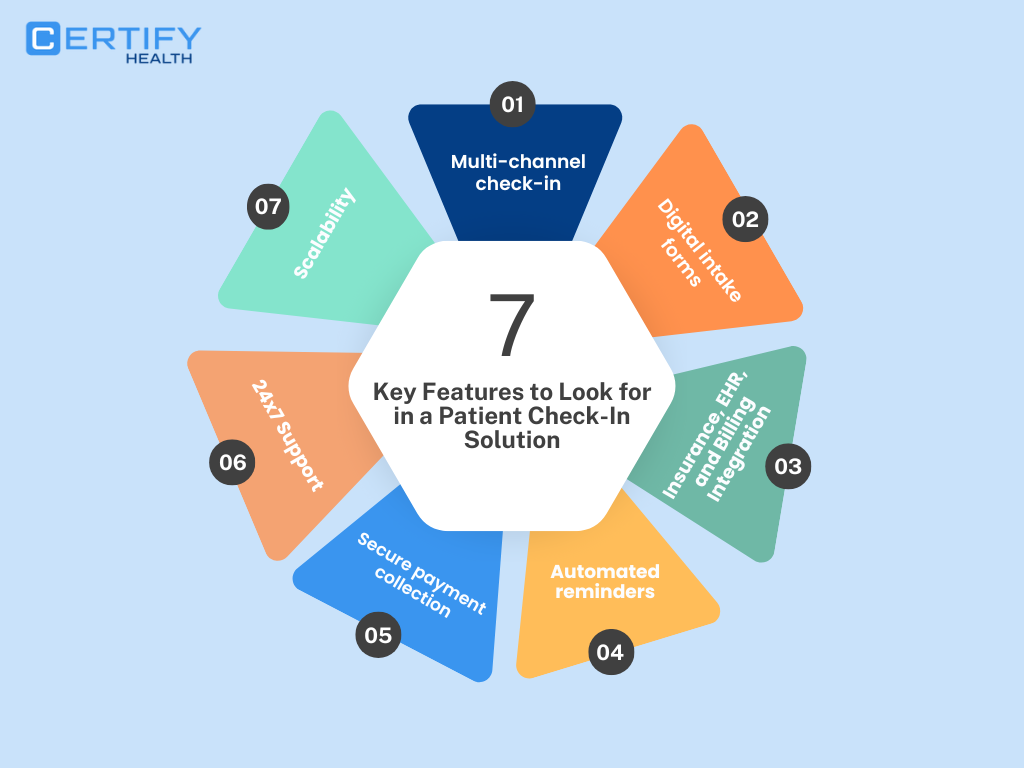
Multi-Channel Check-In Options
The most effective systems provide a consistent experience across multiple platforms:
- Self service health kiosks
- Mobile applications
- Web portals
- Tablet-based interfaces
This omnichannel approach ensures accessibility for all demographic groups while maintaining workflow consistency regardless of entry point.
Digital Intake Capabilities
Rather than simply replicating paper forms in digital format, sophisticated platforms incorporate intelligent design elements that streamline information collection:
- Pre-populated fields with existing data from previous visits
- Smart forms that adjust questions based on previous answers
- Automatic detection of information changes requiring verification
EHR Integration
Leading solutions establish bidirectional data exchange with electronic health record systems. This integration extends beyond basic demographic details to include:
- Updated medical histories
- Medication lists
- Allergies
- Other clinically relevant information
Insurance Verification
Premium medical check in solutions incorporate real-time verification that instantly validates:
- Coverage status
- Benefit levels
- Deductible information
- Co-payment requirements
Communication Management
Advanced patient self check in systems incorporate intelligent communication features:
- Automated appointment reminders
- Pre-visit instructions
- Follow-up communications
- Virtual queue management for infection control
Security and Compliance
Comprehensive patient check in solutions incorporate enterprise-grade security measures:
- Data encryption
- Role-based access controls
- Automatic session timeouts
- Detailed audit logging
- HIPAA and GDPR compliance features
Top 5 Patient Check-In Solutions in 2025
1. CERTIFY Health
CERTIFY Health’s patient check in software addresses check-in bottlenecks experienced by healthcare practices regardless of their size. Patients can effortlessly perform contactless check-ins and fill out digital intake forms, while payment, insurance verification, and identity verification can be done before or during check in. The solution boosts security, minimizes wait times, improves revenue cycle management, and meets healthcare compliance regulations.
Key Features:
- Contactless mobile and kiosk check-in
- Biometric FaceCheckTM authentication for secure access
- Real-time insurance verification
- Digital healthcare payment solution and co-pay collection
- EHR integration for seamless data flow
2. Medesk
Medesk simplifies patient check-ins with an intuitive, cloud-based platform designed for clinics of all sizes. It enables pre-appointment form completion, real-time status tracking, and automated reminders, helping reduce no-shows and administrative workload.
Key Features:
- Online pre-registration and check-in
- Automated appointment reminders
- Patient history and document storage
- Integration with practice management software
- Customizable workflows for different specialties
3. Epic Systems
Epic’s patient check-in solution offers a personalized, mobile-friendly experience that integrates with MyChart. Patients can complete forms, verify insurance, and even communicate with staff in real time, ensuring a smooth check-in process.
Key Features:
- Mobile check-in via MyChart
- Self-service kiosks for in-office check-ins
- Insurance verification and digital payments
- Secure messaging with front-desk staff
- Deep integration with Epic EHR
4. Tebra
Tebra’s patient intake and check-in system enhances efficiency with digital forms, automated reminders, and seamless EHR integration. Its user-friendly interface reduces paperwork, minimizes wait times, and improves patient satisfaction.
Key Features:
- Digital intake forms and pre-visit check-in
- Automated reminders and confirmations
- Insurance and ID verification
- HIPAA-compliant data security
- EHR integration for streamlined workflows
5. Athenahealth
Athenahealth’s check-in solution simplifies patient intake by offering digital pre-visit forms, real-time eligibility checks, and contactless patient payment solution. It reduces administrative burdens and enhances patient engagement through a seamless, mobile-friendly experience.
Key Features:
- Online pre-visit registration
- Automated eligibility and insurance verification
- Contactless check-in and payment
- Customizable patient intake workflows
- Integration with Athenahealth EHR
The Growing Challenges of Choosing Patient Check-In Software
Selecting the optimal medical check in software has become increasingly complex for healthcare organizations in 2025. Modern practices face numerous challenges when evaluating and implementing new patient check in solutions.
Integration Limitations
Many existing platforms offer restricted integration capabilities with electronic health record (EHR) systems and billing software. This fragmentation creates information silos that require manual data transfer between systems, increasing administrative workload and introducing opportunities for errors.
User Experience Frustrations
Poorly designed interfaces lead to frustration for both staff members and patients. When staff must constantly troubleshoot technical problems or assist confused patients, it diverts valuable resources away from clinical care activities.
Security and Compliance Concerns
Not all patient self check in kiosks hospital provide adequate protection for sensitive health information. This creates vulnerability to data breaches and regulatory penalties including:
- HIPAA compliance violations carrying significant financial penalties
- GDPR compliance adding another layer of complexity for practices serving international patients
- Difficulty tracking and auditing patient data access in manual systems
Practice Size and Specialty Mismatches
The diversity of healthcare practice sizes and specialties further complicates the selection process. A medical check in solution perfectly suited to a large hospital system may prove impractical for a small specialty clinic with different workflow requirements.
Implementation and ROI Challenges
Implementation costs and return on investment concerns frequently delay decisions about upgrading patient self check in systems. Beyond the initial purchase price, practices must consider costs associated with installation, training, and potential workflow disruptions during transition periods.
How to Choose the Right Patient Check-In Software
Selecting the optimal medical check in solution begins with a thorough assessment of your practice’s specific requirements and operational challenges.
Identify Your Practice’s Unique Needs
Different practice types have different requirements:
- High-volume facilities need robust systems capable of processing numerous simultaneous check-ins
- Smaller practices may prioritize affordability and simplicity
- Specialty clinics may need specific features like photo capture or imaging integration
Prioritize Integration Capabilities
The ideal medical check in software establishes seamless connections with your existing systems:
- Electronic health record system
- Practice management platform
- Billing software
- Scheduling tools
Evaluate Security Infrastructure
Security infrastructure demands particularly careful scrutiny when evaluating patient self check in systems:
- Data encryption standards
- Authentication protocols
- Audit capabilities
- Vendor security certification status
- Breach notification policies
Assess User Experience
Request demonstration access that allows both administrative staff and representative patients to interact directly with potential systems. Evaluate:
- Interface clarity
- Workflow logic
- Number of steps required to complete common tasks
- Mobile responsiveness
Calculate Total Cost of Ownership
Cost considerations extend beyond initial purchase prices to include:
- Implementation expenses
- Ongoing maintenance fees
- Update costs
- Potential revenue impacts
Conclusion
The evolution of medical check in technology has fundamentally transformed healthcare operations by 2025. Modern patient check in solutions deliver comprehensive benefits beyond simple automation—they represent strategic platforms that simultaneously enhance operational efficiency, strengthen financial performance, ensure regulatory compliance, and improve patient experiences.
Digital check in solutions specifically address the hidden costs of traditional manual processes. By eliminating paper-based workflows, these platforms reduce administrative labor requirements while simultaneously improving data accuracy and accessibility.
Healthcare organizations considering implementation of patient check in kiosks for medical offices should conduct thorough evaluations based on their specific operational requirements, existing technical infrastructure, and strategic objectives. The ideal solution aligns perfectly with unique organizational needs while offering sufficient flexibility to accommodate future growth and changing care delivery models.
CERTIFY Health’s Patient Check-In Software can streamline operations and boost your practice’s revenue—explore it now!


